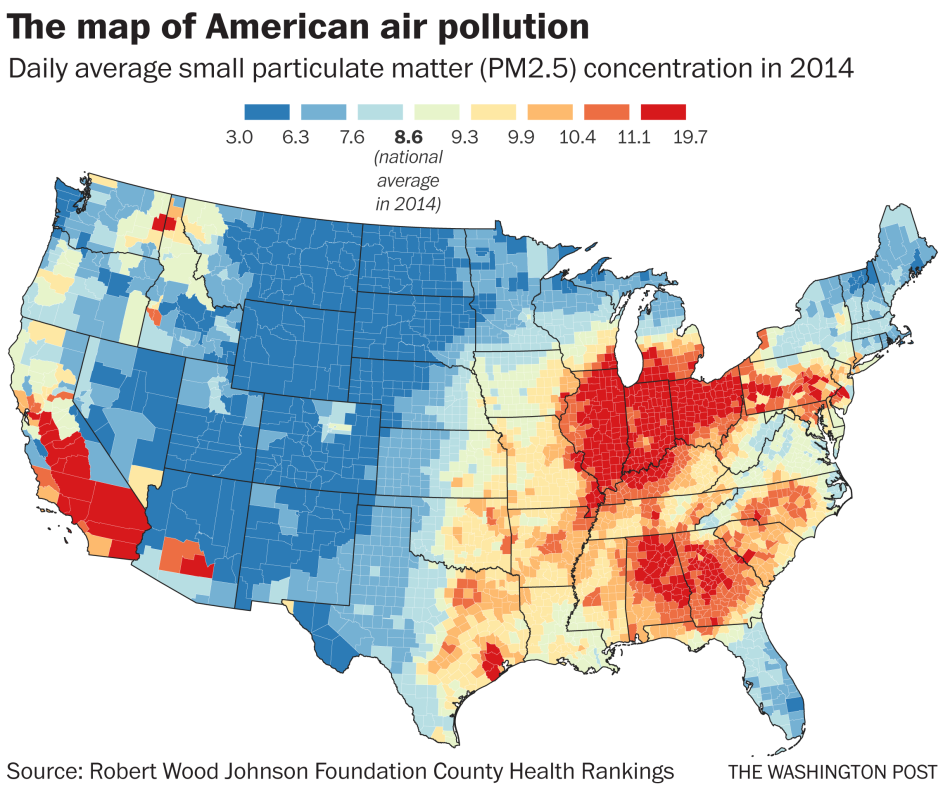
Industry is in the U.S.A., as in any developed country, a source of pollution of the most worrying but also one of those against which the means of action exist. Acting against industrial pollution implies, for a given state, compromise between what it is possible to impose on a industrial without hampering its productive capacity and an ideal level of non-pollution.
In the USA, the country of “free-enterprise” par excellence, the vigorous provisions of the Clean Water Act elicited strong reactions from the share of industrialists. Most of the legal actions against the federal government following the 1972 text, emanate from concerned industrialists to limit the constraints in their management and production. The federal standards imposed on the industry by the Clean Water Act appeared in effect, strangely restrictive compared to the previous legislative state where the only water quality standards established by the federated authorities were not enough to hinder industrialists who were still able to negotiate with local public authorities.
Since 1972, the control system has been based on the existence of standards federal uniforms for industrial effluent emissions; these standards are set according to specific objectives that it is desirable to achieve. This system should no longer allow opportunities for “bargaining” between local authorities and industrial firms. It is, moreover, entirely based on current and future technological capacities for processing rejects. The provisions implemented vary considerably depending on the industries
existing or industries being installed.
Existing industries
Difficulties in applying water quality and identification criteria offenders have led the American legislator to adopt a system of control of industrial pollution at its source. In the USA the operating difficulties of the stations and the absence of technical competence of maintenance personnel make it more difficult to find optimal waste management solutions.
All industries are subject to product rejection standards regarding pollutants and the control of the application of these standards is carried out by means of the discharge permit issued by federal or federated authorities (by delegation). The standards are set by the Environmental Protection Agency and are identical for the same category of pollutants and industries.
This uniformity has been strongly contested by industrialists but the Supreme Court has, in many occasions reaffirmed the right of the federal government to impose standards identical for the same sources of pollution. The fight against industrial pollution is essentially characterized by the process of treatment of rejections according to the possibilities existing technology. No more in the U.S.A. than in France, has the legislator shown imagination by considering other means of struggle such as recycling rejections, change of manufacturing processes or change of products themselves.
The emphasis on technological capabilities is clearly seen through the objectives assigned to industrial firms. They must meet two goals successive: on the one hand, they must first implement the most immediately achievable processing technology; on the other hand, and in secondly, the rejects must be treated by the best methods technology available. These two objectives are called, in the law of 1972, B.P.T. (best practicable technology) and B.A.T. (best available technology).
In 1972, the deadlines set for achieving these goals were 1977 for the B.P.T. and 1983 for the B.A.T standard. These deadlines were revised in 1977 and are currently 1983 for the B.P.T. and 1984 for the standard B.A.T. B.P.T. and B.A.T., which are the keystones of the control system against industrial pollution, contain two basic elements:
- a notion of technological availability
- a notion of economic capacity
A technology which has demonstrated its utility and its results and that is economically viable. We noted the character
somewhat vague of these standards but, in fact, they are implemented by the E.P.A. or the federated authorities at the level of the discharge standards set and allowed in discharge permits. It is obvious that the economic capacities firms are then taken into account without admitting an analysis cost-benefit rejected, from the start, by Congress.
B.P.T. and B.A.T. are only considered as stages allowing to reach the “zero point” of discharge but already the manufacturers are doing note that no technology currently achieves this point and that the cost of treatments increases considerably after a level of 90 to 95% of waste treatment.
The rigidity of the system is corrected by the fact that the E.P.A. can grant modifications to the standards required depending on the B.A.T.time if the manufacturer proves that the technology he uses represents the maximum of his capacities economic (section 301 (c) of the Clean Water Act).